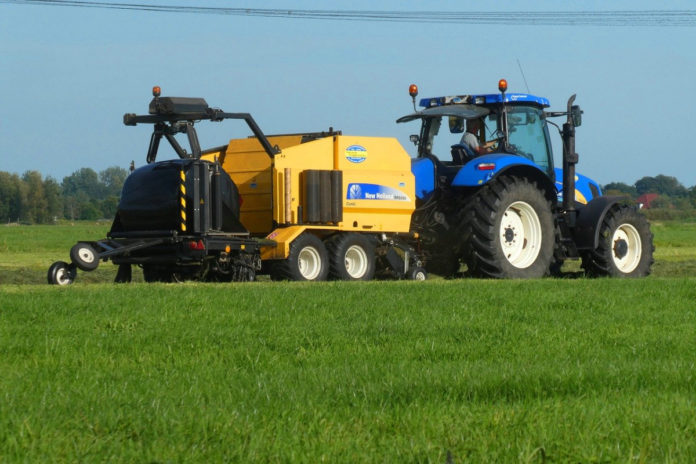After a period of unprecedented lockdown and severe disruption to the economy, the country is on course for a five-step plan towards the “new” normal, writes John Galvin, B&T Drystock Adviser, Teagasc Galway/Clare.
However, with the exception of mart disruptions, it is largely business as usual for the farming community and now silage season or “silly season” as one contractor described it to me, is upon us.
Grass silage is not the cheapest stand-alone winter feed, but when costed as part of an integrated grazing/silage system, no alternative can provide a cheaper year-round feed (Finneran 2012). It is the forage of choice on the majority of cattle farms in Ireland.
Dry matter digestibility (DMD) is the key component influencing silage feed value which leads to a high energy feed with high animal intake potential that in turn leads to high animal performance.
High DMD (70+) silage should be an objective for all farmers with growing and/or finishing stock over the winter -see Table 1 below
Table 1 – Silage Digestibility:
|
DMD % |
75 |
70 |
65 |
60 |
|
Harvest Date |
20th May |
2nd June |
15th June |
30th June |
|
Intake (kg/day) |
9.0 |
8.3 |
7.6 |
7.0 |
|
Livewt. Gain (kg/day) |
0.83 |
0.66 |
0.49 |
0.31 |
|
DM yield (t/ha) |
4.6 |
6.0 |
7.0 |
7.7 |
(Source: Teagasc Grange)Fodder budget
In my role as a Drystock Adviser, I normally get queries about silage quality at two specific times of year notably before cutting and secondly after opening the pit or first bales.
Whilst carrying out tests at these times is informative and beneficial for future seasons, it cannot provide any influence (positive or otherwise) on the quality of the silage.
Implementing both long term and short-term plans are fundamental to achieving high-quality silage.
In a recent discussion with a farmer completing his BPS, he flagged the need for a fodder budget for wintering 25 suckler cows, 25 weanlings and 25 finishers fed with bales over a 5-month winter.
After crunching the numbers, we determined that 155 bales for the cows and 310 bales for weanlings and finishers were required. We targeted getting 300+ bales of high-quality silage harvested in the 3rd/4th week in May for the younger stock and harvest the remaining 150 bales of lesser quality silage for the cows later into June.
We focused on getting 30 acres grazed off by the first week in April to remove any residual dead butt. Phosphorous and potassium were spread according to soil recommendations and topped dressed with 100 units of Nitrogen fertiliser.
This was a positive task which the farmer found hugely beneficial. Carrying out a fodder budget, setting a target harvest date and working backwards from that is fundamental in replenishing a farmer’s silage stocks adequately in terms of the correct quantity of the correct quality of fodder.
Silage quality
A few common key areas to watch when aiming to harvest quality silage;
- The key influence of quality in silage is firstly pasture quality, silage can only be as good as the quality of the pasture being harvested (Ryegrass Vs Old Pasture);
- Stage of growth of grass at the time of cutting (just before seed heads start to appear);
- Graze off dead butt tightly prior to closing;
- Do not overload the crop with nitrogen especially old pastures with limited yield potential and un-grazed fields – it delays cutting date and causes lodging risk;
- Ensure not to mow too bare – this risks bacterial contamination;
- Try to mow in the late afternoon, when both the sugars and dry matter levels of the grass are at their peak;
- A fast wilt of 24-48 hours depending on mower type and weather conditions is best;
- Avoid delay in harvest especially as there is a high-quality penalty associated with lodged crops;
Whilst the big June cut may appear a significant yield, anecdotal evidence from previous fodder shortage surveys suggest that the farmers that delayed their first cut the longest had the largest fodder shortages.
The advantage of the May cut over June is the quality benefit in the forage will lead to 50-60kg heavier weanlings after the winter, for the difference in two weeks. A good rule of thumb is to cut before seed heads appear.
With the national average DMD of silage estimated to be <65 DMD there is plenty of scope for improvement.
Safety
On a separate note, all farmers must keep the highest vigilance to farm safety, predominately due to the increased number of children that are present on farms that would otherwise be in schools, crèches or with childminders. Children and farm machinery are a lethal combination, so please be mindful and stay safe.
At the time of writing, there is no prospect of Teagasc Offices opening within the next two weeks, so our ability to carry out silage testing similar to other years will be limited, however, should you have any queries please do not hesitate to contact your Advisor or Consultant.





